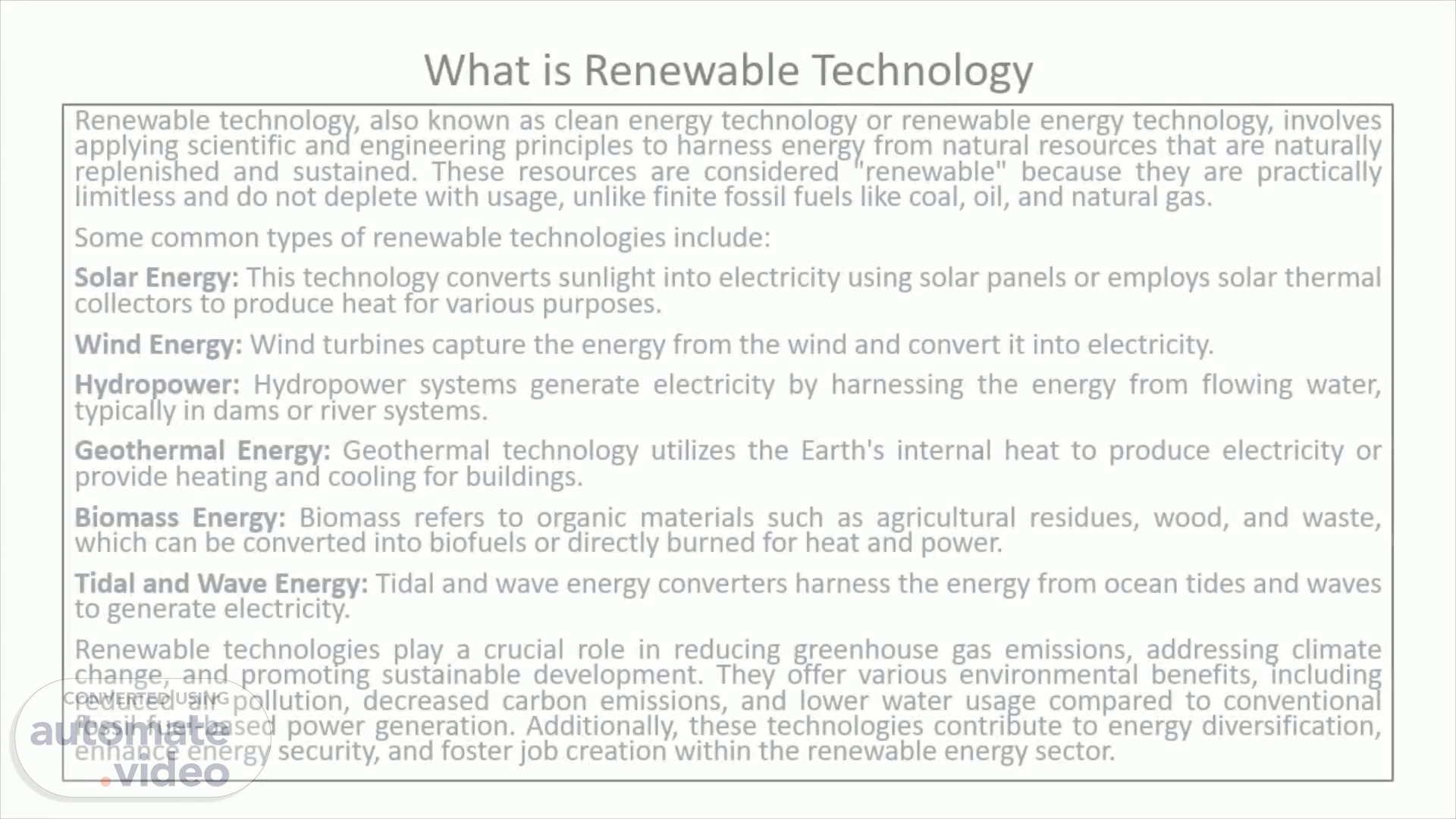
PowerPoint Presentation
Scene 1 (0s)
[Audio] Renewable technology, also known as clean energy technology or renewable energy technology, involves applying scientific and engineering principles to harness energy from natural resources that are naturally replenished and sustained. These resources are considered "renewable" because they are practically limitless and do not deplete with usage, unlike finite fossil fuels like coal, oil, and natural gas. Some common types of renewable technologies include: Solar Energy: This technology converts sunlight into electricity using solar panels or employs solar thermal collectors to produce heat for various purposes. Wind Energy: Wind turbines capture the energy from the wind and convert it into electricity. Hydropower: Hydropower systems generate electricity by harnessing the energy from flowing water, typically in dams or river systems. Geothermal Energy: Geothermal technology utilizes the Earth's internal heat to produce electricity or provide heating and cooling for buildings. Biomass Energy: Biomass refers to organic materials such as agricultural residues, wood, and waste, which can be converted into biofuels or directly burned for heat and power. Tidal and Wave Energy: Tidal and wave energy converters harness the energy from ocean tides and waves to generate electricity. Renewable technologies play a crucial role in reducing greenhouse gas emissions, addressing climate change, and promoting sustainable development. They offer various environmental benefits, including reduced air pollution, decreased carbon emissions, and lower water usage compared to conventional fossil fuel-based power generation. Additionally, these technologies contribute to energy diversification, enhance energy security, and foster job creation within the renewable energy sector..